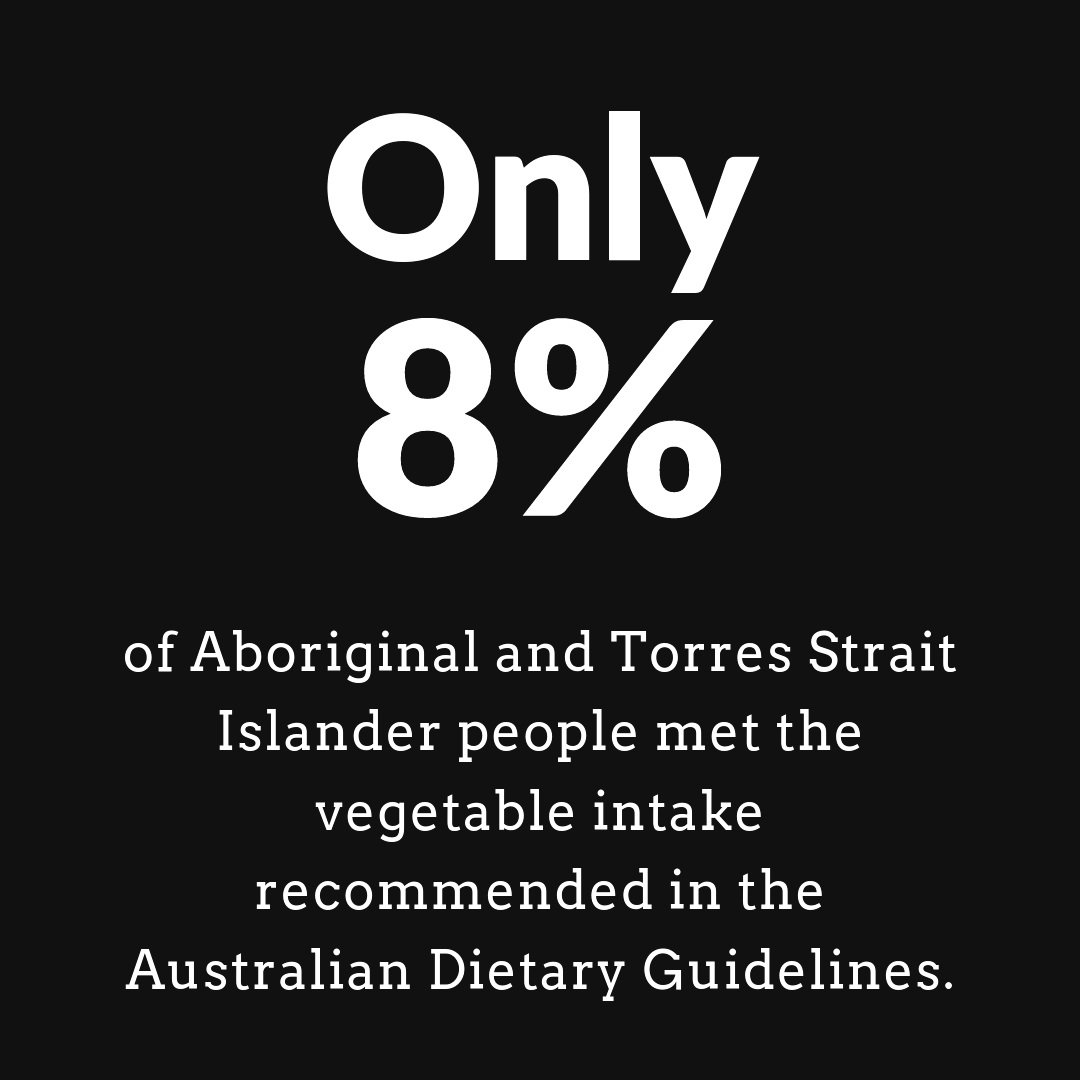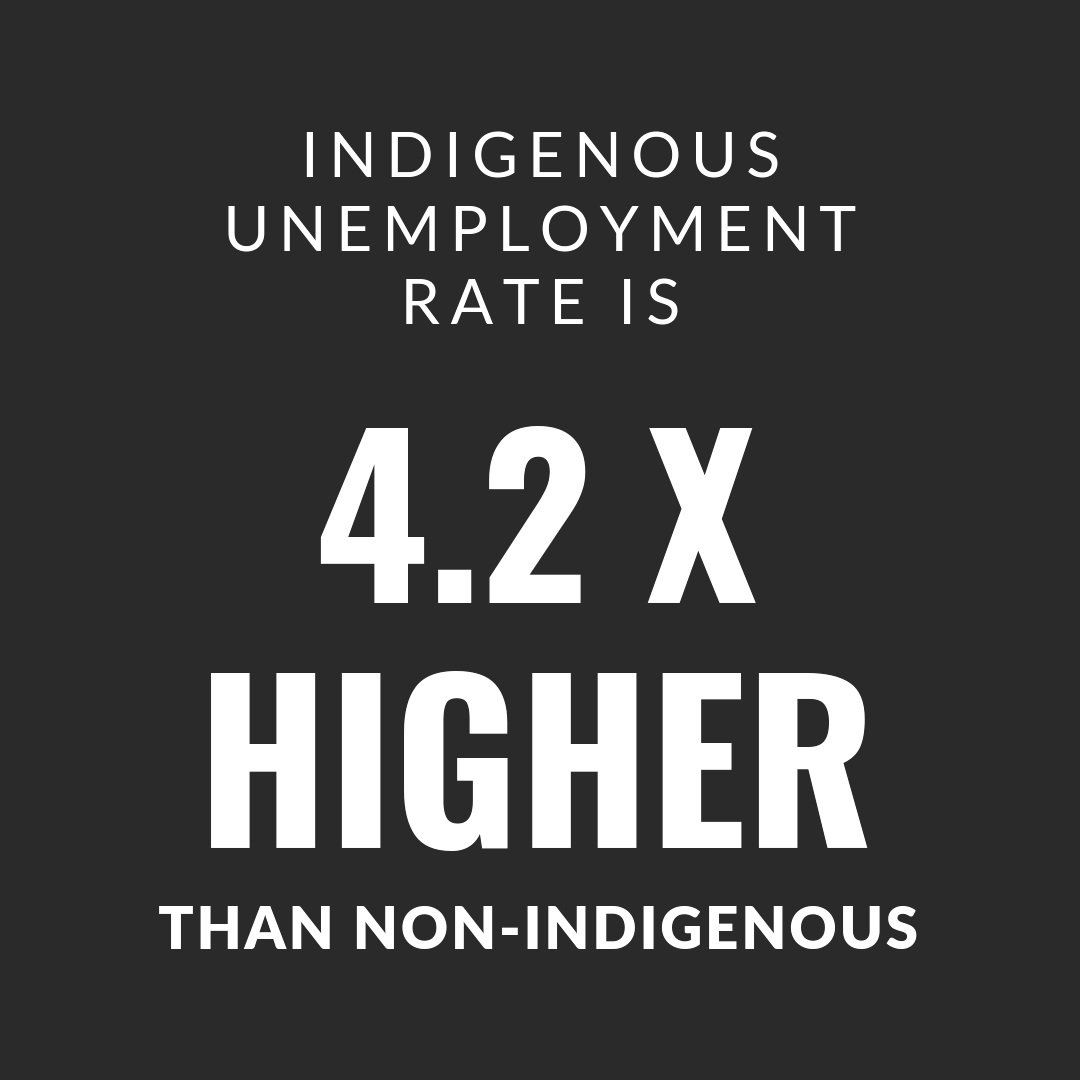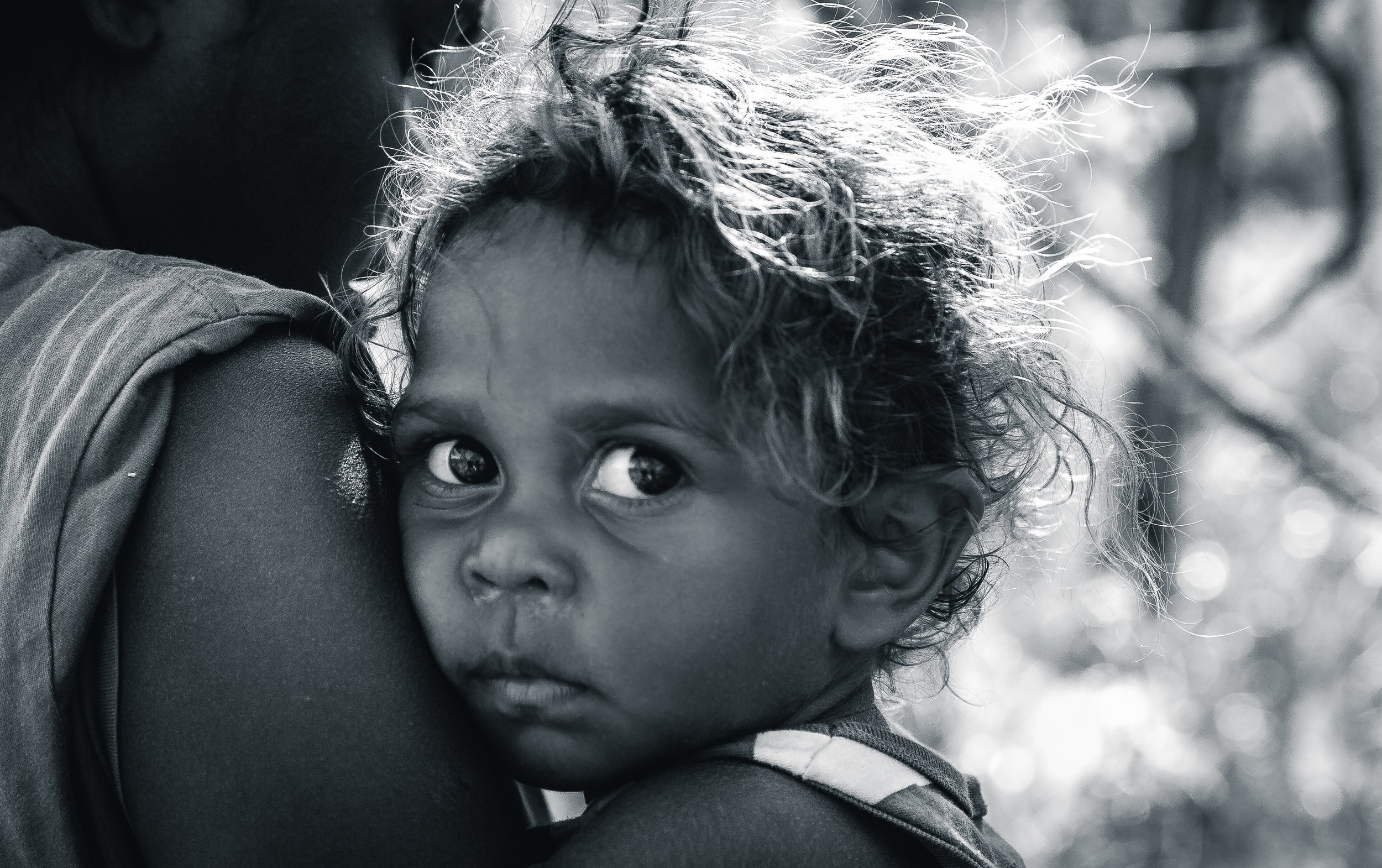
Indigenous Food Security
The Indigenous Futures Foundation Innovation Precinct
Before colonisation, First Nation people were healthy, lived sustainably and in balance with each other and country for thousands of years.
When land sovereignty was taken and tribes were displaced, many First Nation people lost access to their hunting lands and traditional foods. The family unit was decimated along with cooking and nutritional knowledge. European settlements decreased access to and availability of traditional foods, and First Nation people were forced to become dependent on rationed and introduced foods.
Colonisation, stolen wages and intergenerational trauma have caused many Indigenous Australians to be born into poverty.
The cost of fruit and vegetables can be up to 60-70% higher in remote communities and cheaper, less nutritious options are often the only option. This has led to communities experiencing food insecurity and a disproportionate burden of diet-related chronic diseases.




Today, food insecurity permeates not only in remote Indigenous communities, but also metro and regional areas.
It includes but is not limited to the following contributing factors:
Poverty
Lack of transport
Lack of storage
Lack of access to power and electricity
Lack of a working fridge, microwave and/or oven
Little or no cooking utensils.
Limited cooking skills
Lack of nutritional education
Lack of employment opportunities
Overcrowded households
High cost of food
Limited food supplies
Lack of quality fruit and vegetables
Lack of land ownership to grow food
Lack of resources for local production


![[Draft] The Indigenous Futures Foundation Innovation Precinct (Super Rough Draft).png](https://images.squarespace-cdn.com/content/v1/619c3661c7529317f44e49af/31874e03-bba8-4ea0-868d-47f348810620/%5BDraft%5D+The+Indigenous+Futures+Foundation+Innovation+Precinct+%28Super+Rough+Draft%29.png)
![[Draft] The Indigenous Futures Foundation Innovation Precinct (Super Rough Draft) (1).png](https://images.squarespace-cdn.com/content/v1/619c3661c7529317f44e49af/2c562803-e618-4a0d-ba19-3b13b8c41870/%5BDraft%5D+The+Indigenous+Futures+Foundation+Innovation+Precinct+%28Super+Rough+Draft%29+%281%29.png)
![[Draft] The Indigenous Futures Foundation Innovation Precinct (Super Rough Draft) (2).png](https://images.squarespace-cdn.com/content/v1/619c3661c7529317f44e49af/d552060f-7bf7-4ac5-b560-fa4d73d11348/%5BDraft%5D+The+Indigenous+Futures+Foundation+Innovation+Precinct+%28Super+Rough+Draft%29+%282%29.png)
![[Draft] The Indigenous Futures Foundation Innovation Precinct (Super Rough Draft) (3).png](https://images.squarespace-cdn.com/content/v1/619c3661c7529317f44e49af/03fc355b-8008-475f-b899-5b5527c9856d/%5BDraft%5D+The+Indigenous+Futures+Foundation+Innovation+Precinct+%28Super+Rough+Draft%29+%283%29.png)
![[Draft] The Indigenous Futures Foundation Innovation Precinct (Super Rough Draft) (4).png](https://images.squarespace-cdn.com/content/v1/619c3661c7529317f44e49af/444c58ae-88f7-4e7e-85e0-10541e3ffcca/%5BDraft%5D+The+Indigenous+Futures+Foundation+Innovation+Precinct+%28Super+Rough+Draft%29+%284%29.png)
![[Draft] The Indigenous Futures Foundation Innovation Precinct (Super Rough Draft) (5).png](https://images.squarespace-cdn.com/content/v1/619c3661c7529317f44e49af/4a4991ec-0817-4f7c-ad5f-901f95bf1e15/%5BDraft%5D+The+Indigenous+Futures+Foundation+Innovation+Precinct+%28Super+Rough+Draft%29+%285%29.png)
![[Draft] The Indigenous Futures Foundation Innovation Precinct (Super Rough Draft) (6).png](https://images.squarespace-cdn.com/content/v1/619c3661c7529317f44e49af/32001cf1-2ba8-4b7a-98a8-234e4f260915/%5BDraft%5D+The+Indigenous+Futures+Foundation+Innovation+Precinct+%28Super+Rough+Draft%29+%286%29.png)
![[Draft] The Indigenous Futures Foundation Innovation Precinct (Super Rough Draft) (7).png](https://images.squarespace-cdn.com/content/v1/619c3661c7529317f44e49af/282cbe09-2110-4ed3-bb2b-e2dfcfeb9b52/%5BDraft%5D+The+Indigenous+Futures+Foundation+Innovation+Precinct+%28Super+Rough+Draft%29+%287%29.png)
![[Draft] The Indigenous Futures Foundation Innovation Precinct (Super Rough Draft) (8).png](https://images.squarespace-cdn.com/content/v1/619c3661c7529317f44e49af/05b487e6-a603-44bb-aa9c-aa36bec48639/%5BDraft%5D+The+Indigenous+Futures+Foundation+Innovation+Precinct+%28Super+Rough+Draft%29+%288%29.png)
![[Draft] The Indigenous Futures Foundation Innovation Precinct (Super Rough Draft) (9).png](https://images.squarespace-cdn.com/content/v1/619c3661c7529317f44e49af/93a97388-aa88-48ec-9ef5-e525791aa9ca/%5BDraft%5D+The+Indigenous+Futures+Foundation+Innovation+Precinct+%28Super+Rough+Draft%29+%289%29.png)
![[Draft] The Indigenous Futures Foundation Innovation Precinct (Super Rough Draft) (10).png](https://images.squarespace-cdn.com/content/v1/619c3661c7529317f44e49af/8764521e-4c9f-471e-8e12-c3b88688ef97/%5BDraft%5D+The+Indigenous+Futures+Foundation+Innovation+Precinct+%28Super+Rough+Draft%29+%2810%29.png)
![[Draft] The Indigenous Futures Foundation Innovation Precinct (Super Rough Draft) (11).png](https://images.squarespace-cdn.com/content/v1/619c3661c7529317f44e49af/b029d6ad-2579-4236-9f7c-91f9e87235e3/%5BDraft%5D+The+Indigenous+Futures+Foundation+Innovation+Precinct+%28Super+Rough+Draft%29+%2811%29.png)
![[Draft] The Indigenous Futures Foundation Innovation Precinct (Super Rough Draft) (12).png](https://images.squarespace-cdn.com/content/v1/619c3661c7529317f44e49af/276493dc-1c27-46bb-b40a-a55d5fd55c56/%5BDraft%5D+The+Indigenous+Futures+Foundation+Innovation+Precinct+%28Super+Rough+Draft%29+%2812%29.png)
![[Draft] The Indigenous Futures Foundation Innovation Precinct (Super Rough Draft) (13).png](https://images.squarespace-cdn.com/content/v1/619c3661c7529317f44e49af/d8eee1d4-7f9f-4561-bd1d-79903d3f30cd/%5BDraft%5D+The+Indigenous+Futures+Foundation+Innovation+Precinct+%28Super+Rough+Draft%29+%2813%29.png)
![[Draft] The Indigenous Futures Foundation Innovation Precinct (Super Rough Draft) (14).png](https://images.squarespace-cdn.com/content/v1/619c3661c7529317f44e49af/1d1fb16a-d038-4776-ad40-2fb67fbca353/%5BDraft%5D+The+Indigenous+Futures+Foundation+Innovation+Precinct+%28Super+Rough+Draft%29+%2814%29.png)

